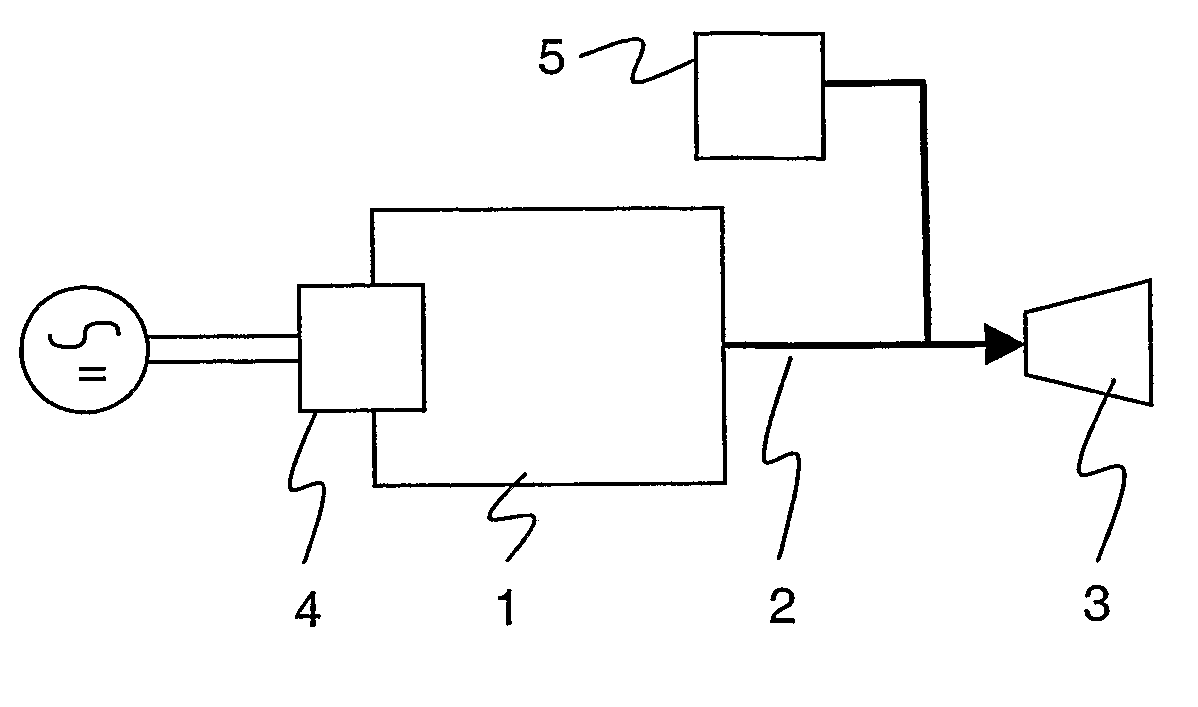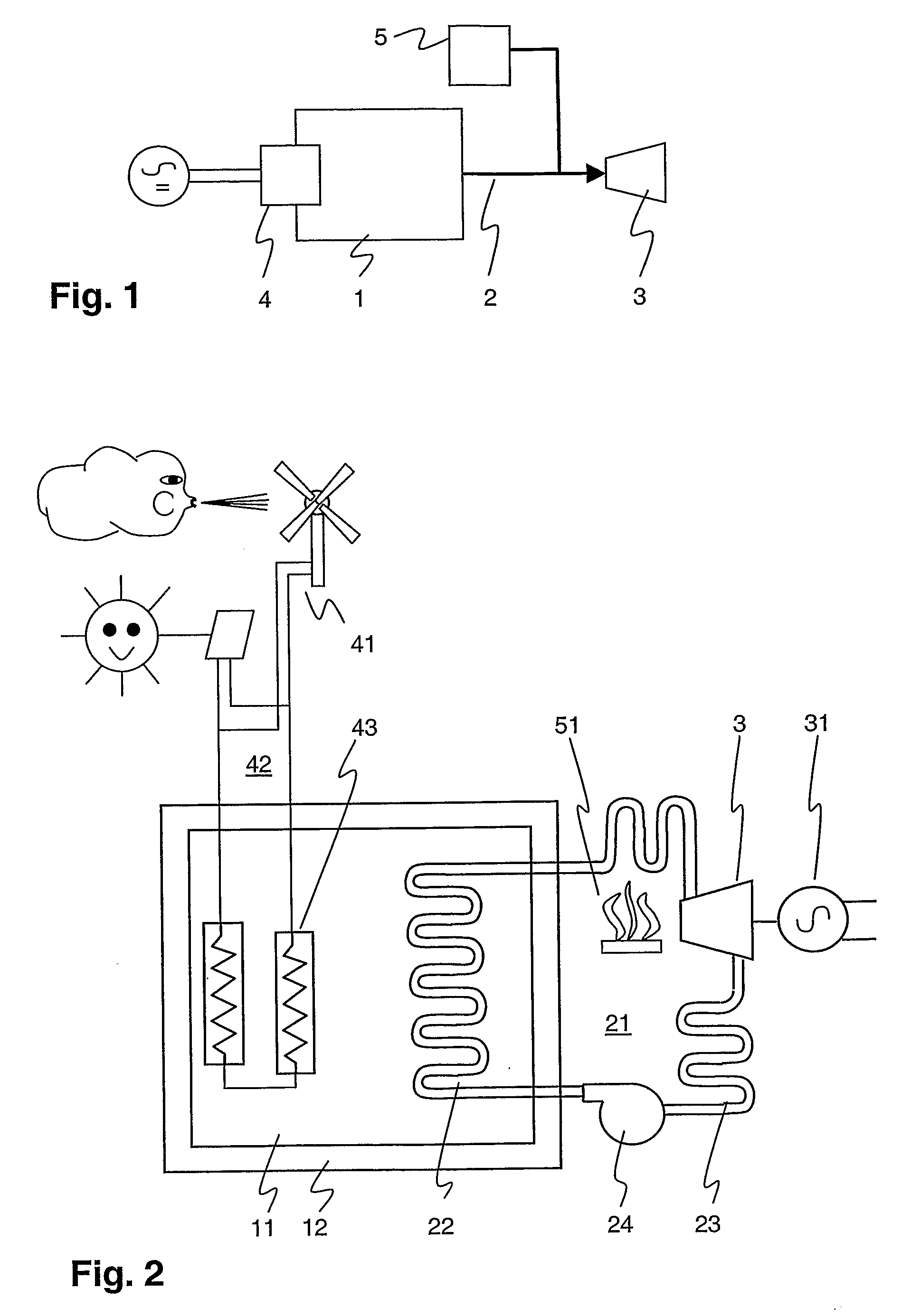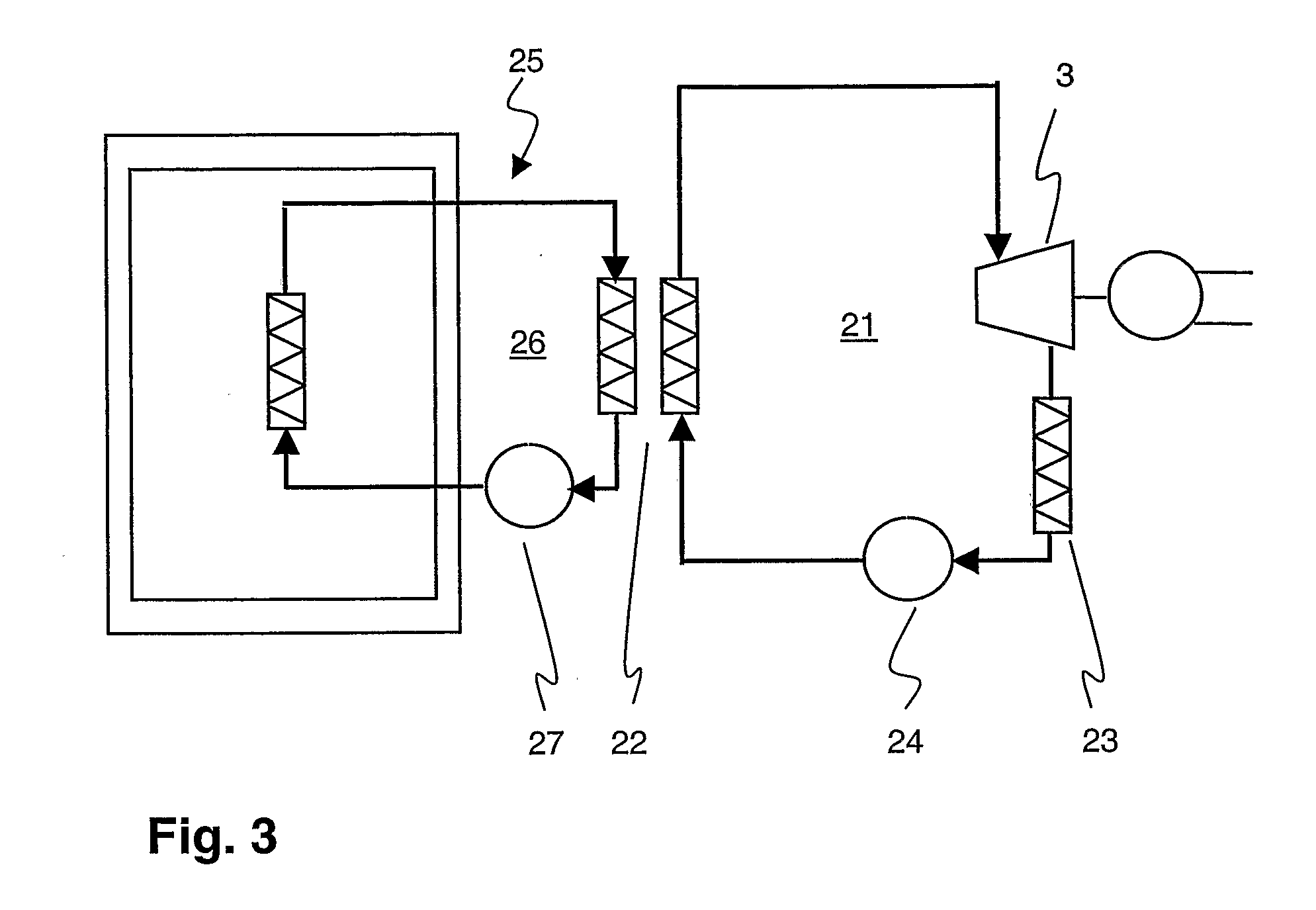Storing Thermal Energy and Generating Electricity
a technology of thermal energy and thermal energy, applied in steam engine plants, machines/engines, propulsion parts, etc., can solve the problems of lack of technical elegance of electrothermal energy storage, limited to few suitable geographic locations and large plant sizes, and low cost per kw (“conversion cost or power cost”), so as to avoid the doubling of essential components
- Summary
- Abstract
- Description
- Claims
- Application Information
AI Technical Summary
Benefits of technology
Problems solved by technology
Method used
Image
Examples
Embodiment Construction
[0010]It is therefore an objective of the invention to balance or equilibrate a time dependent discrepancy between an electricity demand and supply without adding too much system investment cost. This objective is achieved by a system for providing thermal energy to a thermodynamic machine and a method for generating electrical power according to claims 1 and 9. Further preferred embodiments are evident from the dependent patent claims.
[0011]According to the invention, a source of electrical power supplies electricity to a first heat generating means which converts the electricity into heat to be stored in a heat storage device. The heat is occasionally retrieved, via first heat transfer means, from the device and provided to a thermodynamic machine for generating electricity such as a thermal machine in expansion mode, i.e. a turbine, or a reciprocating engine, e.g. a Stirling engine. If the thermal energy thus retrieved is insufficient to meet the electricity demand, it is complem...
PUM
 Login to View More
Login to View More Abstract
Description
Claims
Application Information
 Login to View More
Login to View More - R&D
- Intellectual Property
- Life Sciences
- Materials
- Tech Scout
- Unparalleled Data Quality
- Higher Quality Content
- 60% Fewer Hallucinations
Browse by: Latest US Patents, China's latest patents, Technical Efficacy Thesaurus, Application Domain, Technology Topic, Popular Technical Reports.
© 2025 PatSnap. All rights reserved.Legal|Privacy policy|Modern Slavery Act Transparency Statement|Sitemap|About US| Contact US: help@patsnap.com



